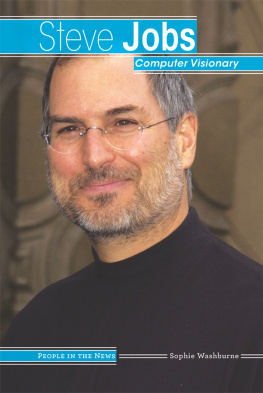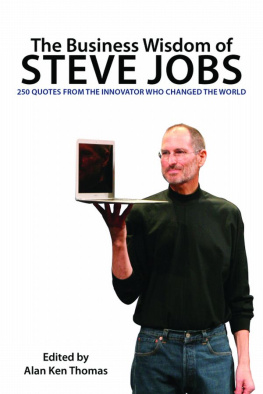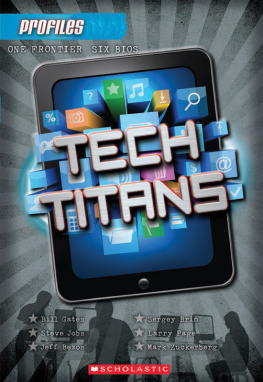ARCHITECTS OF THE INFORMATION AGE
COMPUTING AND CONNECTING IN THE 21ST CENTURY
ARCHITECTS OF THE INFORMATION AGE
EDITED BY ROBERT CURLEY, MANAGER, SCIENCE AND TECHNOLOGY

Published in 2012 by Britannica Educational Publishing
(a trademark of Encyclopdia Britannica, Inc.)
in association with Rosen Educational Services, LLC
29 East 21st Street, New York, NY 10010.
Copyright 2012 Encyclopdia Britannica, Inc. Britannica, Encyclopdia Britannica, and the Thistle logo are registered trademarks of Encyclopdia Britannica, Inc. All rights reserved.
Rosen Educational Services materials copyright 2012 Rosen Educational Services, LLC.
All rights reserved.
Distributed exclusively by Rosen Educational Services.
For a listing of additional Britannica Educational Publishing titles, call toll free (800) 2379932.
First Edition
Britannica Educational Publishing
Michael I. Levy: Executive Editor
J.E. Luebering: Senior Manager
Marilyn L. Barton: Senior Coordinator, Production Control
Steven Bosco: Director, Editorial Technologies
Lisa S. Braucher: Senior Producer and Data Editor
Yvette Charboneau: Senior Copy Editor
Kathy Nakamura: Manager, Media Acquisition
Robert Curley : Manager, Science and Technology
Rosen Educational Services
Heather M. Moore Niver: Editor
Nelson S: Art Director
Cindy Reiman: Photography Manager
Matthew Cauli: Designer, Cover Design
Introduction by Greg Roza
Library of Congress Cataloging-in-Publication Data
Architects of the information age / edited by Robert Curley.1st ed.
p. cm.(Computing and connecting in the 21st century)
In association with Britannica Educational Publishing, Rosen Educational Services.
Includes bibliographical references and index.
ISBN 978-1-61530-717-3 (eBook)
1. Computer scientistsBiography. 2. Telecommunications engineersBiography. I.
Curley, Robert, 1955
QA76.2.A2A73 2012
004.0922dc23
[B]
2011015174
On the cover: Clockwise from top left are Sean Parker, Steve Jobs, Mark Zuckerberg, Meg Whitman, and Bill Gates, each of whom has made groundbreaking contributions to the world of computerized communication. Miguel Villagran/Getty Images (Parker), Shaun Curry/AFP/Getty Images (Jobs), Mandel Ngan/AFP/Getty Images (Zuckerberg), Frederick M. Brown/Getty Images (Whitman), Scott Gries/Getty Images (Gates)
On -xi: The creativity and inventive thinking of countless inventors over the years have resulted in ever more advanced computers and technology. Hemera/Thinkstock
Page www.istockphoto.com/Andrey Volodin; remaining interior background image Yoshikazu Tsuno/AFP/Getty Images
CONTENTS
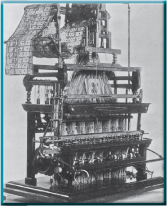

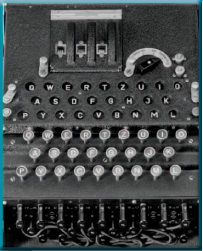

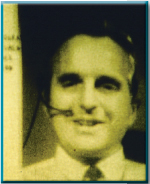


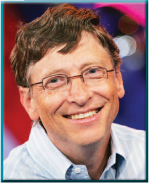


INTRODUCTION

C omputers have come to rule nearly every facet of our modern world. From alarm clocks to automobiles, computer technology has revolutionized the way people live their lives. Thanks to the Internet, satellites, laptops, and cell phones, we have the potential to converse with anyone anywhere in the world in an instant. Despite the flourishing of computer technology in a relatively short period of time, few people stop to think about the pioneers and innovators who helped bring about the computer revolution.
While modern computers began to take shape in the 1950s, the roots of computer technology extend back to 1790. That was the year French inventor Joseph-Marie Jacquard came up with an idea that transformed the textile industry. Data in the form of cards with holes punched in them were fed into Jacquards loom. The cards told the loom what designs to weave.
The use of punch cards influenced other scientists, notably English mathematician Charles Babbage. In 1837 Babbage described the Analytical Engine, which used Jacquards card-reading technology to solve mathematical calculations. Babbages machine could print out answers and even create new punch cards to store data for future use.
Countess Ada Lovelacea friend of Babbageswrote an algorithm intended to be processed by the machine. Today, many consider Babbages design to be the first plans for a digital computer and Ada Lovelace to be the first computer programmer.
Jacquards punch cards also inspired American inventor Herman Hollerith. Hollerith developed a machine that read and sorted punch cards to tabulate the U.S. census of 1890. In the following years, Hollerith founded the Tabulating Machine Company to manufacture the punch card machines.
In 1924, after a series of mergers, Holleriths company transformed into the International Business Machines Corporation (IBM). Led by Thomas Watson, Sr.and later by his son, Thomas Watson, Jr.IBM became a world leader in the manufacture of electric typewriters and calculators. Today IBM is one of the leading computer manufacturers in the world.
In the early 1900s, several notable mathematicians, engineers, and scientists laid the groundwork for the computer revolution that would soon follow. Engineer Vannevar Bush developed analog computers to help strengthen the nations military and electric-power network. In 1945 Bush wrote a paper on a device capable of archiving, indexing, retrieving, and cross-referencing data. This idea foreshadowed the advent of hypertext and the World Wide Web.
In the late 1930s physicist John Atanasoff, along with electrical engineer Clifford Berry, invented the Atanasoff-Berry Computer. This machine could solve complex problems using data expressed in binary form. More than 30 years later it was recognized as the first digital computer.
Grace Murray Hopper was a rear admiral in the U.S. Navy, but she was also a brilliant mathematician. She helped develop the first large-scale automatic calculator, a forerunner to the first electronic computers. She is perhaps best remembered for creating the first compilersoftware that translates source code written by a programmer into a language understood by computers. Hopper also coined the phrase bug to refer to computer glitches.
Next page







